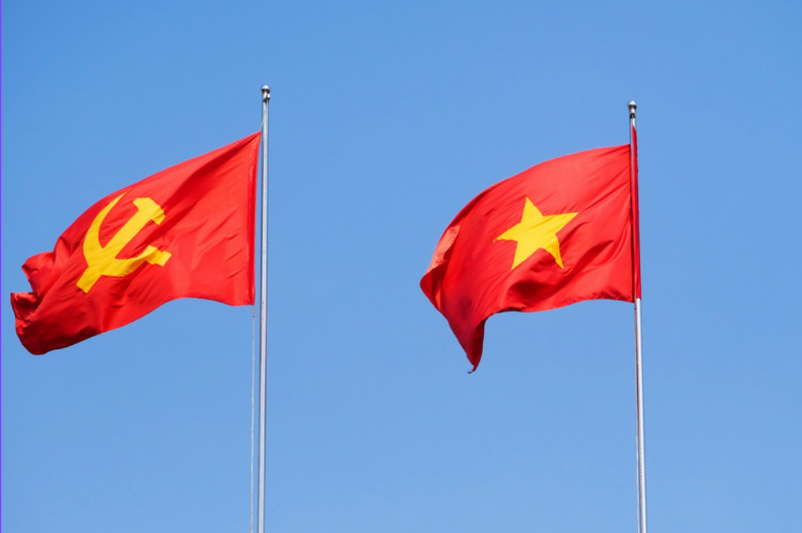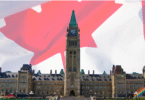Vietnam is one of the most beautiful and exciting countries in Southeast Asia. You may be planning to go for a relaxing vacation, a business meeting, or a longer stay; anyone you set your mind on, Vietnam welcomes visitors from all over the world.
But before you pack your bags, there’s one important thing you need to take care of and that is your visa.
Getting a visa to enter Vietnam might seem like a complicated process, especially if it’s your first time. But don’t worry. This article will walk you through everything you need to know to get your Vietnamese visa.
We’ll explain the different types of Vietnamese visas, who needs one, how you can apply, how much it costs, and what documents you’ll need. So, if you’re planning a trip to Vietnam and want to make the visa process smooth and stress-free, keep reading. You’re in the right place.
What Is a Vietnamese Visa?
A Vietnamese visa is an official document or stamp that allows you to enter and stay in Vietnam for a certain period of time. It is issued by the government of Vietnam, either before you travel or when you arrive at the airport (depending on your nationality and visa type).
Why Is a Visa Important?
A visa is important because it helps Vietnam control who comes in and goes out of the country. It also shows the purpose of your visit, whether it’s for tourism, business, study, work, or transit.
If you try to enter Vietnam without the right visa, immigration officers may refuse to let you in. So it’s very important to apply for the correct visa before your trip.
Is a Visa the Same as a Passport?
No. A passport is your personal international ID issued by your country, while a visa is an entry permit issued by the country you are visiting—in this case, Vietnam. You need both a valid passport and a visa (unless you’re from a visa-free country) to enter Vietnam legally.
Do You Need a Visa to Visit Vietnam?
Not everyone needs a visa to visit Vietnam. Whether or not you need one depends mostly on your nationality and how long you plan to stay.
Some travelers can enter Vietnam without a visa and stay for a short time. Others must apply for a visa before entering the country. It’s important to know where your country stands so you don’t run into problems at the airport or border.
Visa-Free Entry
Vietnam allows visitors from some countries to enter without a visa for a short stay. This is called visa-free entry or visa exemption. The number of days you can stay without a visa depends on your nationality.
Here are a few examples of countries whose citizens can enter Vietnam without a visa:
- Citizens of Thailand, Malaysia, Singapore, Indonesia, Cambodia, and Laos can stay up to 30 days without a visa.
- Citizens of Japan, South Korea, Russia, and some European countries like Germany, France, the UK, and Italy can stay up to 15 days without a visa.
- Citizens of the Philippines can stay up to 21 days, while Brunei and Myanmar citizens get 14 days.
However, there are conditions:
- You must have a valid passport with at least 6 months before expiry.
- You must leave Vietnam before your visa-free period ends.
- You may need to wait a certain number of days before re-entering Vietnam visa-free again.
Important Note: Visa-free policies can change. It’s always best to check with the nearest Vietnamese embassy or the official Vietnam Immigration website before you travel.
If You Do Need a Visa
If your country is not on the visa exemption list or you plan to stay longer than the allowed visa-free days, you will need to apply for a visa.
How Can You Be Sure?
Visa rules change from time to time, so the best way to know if you need a visa is to:
- Visit the official website of the Vietnam Immigration Department, or
- Contact the Vietnamese Embassy or Consulate in your country.
It’s always better to check before you book your flight, just to be safe.
Types of Vietnamese Visas
Before applying for a Vietnamese visa, it’s important to know the type of visa that suits your travel purpose. Vietnam offers different visas for different needs whether you’re going as a tourist, for work, for school, or just passing through.
Let’s look at the main types of Vietnamese visas and what they mean:
1. Tourist Visa (DL Visa)
This is the most common visa for people visiting Vietnam for holidays or sightseeing. If you’re planning to relax on the beaches of Da Nang or explore the streets of Hanoi and Ho Chi Minh City, this is the visa for you.
- Usually valid for 30 days (sometimes 90).
- Can be single-entry or multiple-entry.
- Some tourist visas can be extended, but not always.
2. Business Visa (DN Visa)
This is for people visiting Vietnam for business reasons like meetings, conferences, or exploring business opportunities.
- Valid for 30 days, 90 days, 6 months, or even 1 year.
- Can be single or multiple-entry.
- May require a sponsoring company in Vietnam.
3. Student Visa (DH Visa)
If you’ve been accepted into a Vietnamese school, college, or university, you’ll need a student visa.
- Usually arranged after you enter Vietnam on another visa (like a tourist visa).
- The school can help you convert it to a student visa.
4. Work Visa (LD Visa)
If you plan to work in Vietnam, this is the right visa. You will need a job offer and a work permit.
- Often issued for 1 year or more.
- Requires documents like a work contract, health certificate, and criminal background check.
- Must be sponsored by your Vietnamese employer.
5. Transit Visa
If you’re just passing through Vietnam on your way to another country and not planning to leave the airport, you might not need a visa. But if you plan to step out of the airport, even for a few hours, you may need a transit visa.
6. Diplomatic and Official Visas
These are special visas for government officials or those on diplomatic missions. They are arranged through embassies and don’t require fees in many cases.
Requirements for a Vietnamese Visa
No matter how you choose to apply whether online, at the airport, or through an embassy, you’ll need to prepare some basic documents. These requirements can change slightly depending on your visa type and nationality, but here are the most common ones.
-
Valid Passport
This is the number one requirement.
- Your passport must be valid for at least 6 months from the date you plan to enter Vietnam.
- It should have at least one or two blank pages for the visa stamp (especially for Visa on Arrival or embassy applications).
-
Visa Application Form
- If you’re applying at an embassy or consulate, you’ll fill out a paper form (usually Form NA1).
- For e-visa, the application form is online.
- Make sure all information matches your passport exactly, no spelling mistakes or errors.
-
Passport Photos
- You’ll usually need 1 or 2 recent passport-sized photos (4×6 cm).
- The photo should have a white background, and you must be facing forward without glasses or hats.
- These are mostly needed for Visa on Arrival or embassy applications.
-
Visa Approval Letter (if applying for Visa on Arrival)
- This is a pre-approval letter from the Vietnam Immigration Department.
- You’ll receive it by email after applying through a travel agency or visa service.
- You must print it out and show it when you land in Vietnam.
-
Visa Fee Payment
- Visa fees depend on the type of visa, how long it’s valid for, and the application method.
- For e-visa, you pay online by card.
- For Visa on Arrival, you pay the stamping fee in cash (usually in USD) at the airport.
- Embassy fees vary. Check with the specific embassy near you.
-
Additional Documents (if required)
Depending on your visa type, you may need extra documents:
- Business Visa: Invitation letter or sponsorship letter from a Vietnamese company.
- Work Visa: Job offer, work permit, medical certificate, criminal background check.
- Student Visa: Acceptance letter from the school or university.
- Transit Visa: Proof of onward travel (like a flight ticket to your final destination).
Quick Tip:
Always double-check the latest visa requirements on:
- The official Vietnam Immigration website
- The website of the Vietnamese embassy or consulate in your country
Step-by-Step Guide on How to Apply for a Vietnamese Visa
Now that you know the types of visas and the general requirements, let’s break it down even further:
-
How to Apply at the Embassy or Consulate
This method is best if you want to have your visa before entering Vietnam or you’re applying for a long-term visa like work, student, or business.
Step-by-Step:
- Find the nearest Vietnamese embassy or consulate in your country.
- Prepare your documents, including:
- Passport
- Completed visa application form
- Passport-sized photo
- Visa fee (check their website for the amount and method of payment)
- Any supporting documents based on your visa type (e.g. invitation letter for business visa).
- Submit your application in person or by mail, depending on embassy rules.
- Wait for processing (usually 3–10 working days).
- Collect your passport with the visa stamped inside.
Tip: Some embassies let you pay an extra fee for express processing if you’re in a hurry.
-
How to Apply for a Visa on Arrival (VOA)
This method is available only if you’re flying into Vietnam and is commonly used by tourists and business travelers.
Step-by-Step:
- Go to a trusted visa agency website (make sure it’s a real one, there are many online).
- Fill out the application form on their website.
- Pay the service fee online.
- Wait for your Visa Approval Letter by email (2–5 working days, or faster with express service).
- Print the approval letter and prepare:
- Your passport (valid for 6+ months)
- 1–2 passport-sized photos
- Cash for stamping fee (usually $25 for single entry or $50 for multiple)
- Fly into a major Vietnamese airport (Hanoi, Ho Chi Minh, Da Nang, etc.).
- Go to the “Visa on Arrival” counter, submit your documents, and get your visa stamped.
Note: VOA is not available at land borders or seaports.
-
How to Apply for a Vietnam E-Visa
This is the easiest method for travelers from over 80 countries, including the US, UK, Canada, Australia, most EU countries, India, and more. It is the perfect option if you’re just visiting for a short time.
Step-by-Step:
- Go to the official e-visa website: https://evisa.xuatnhapcanh.gov.vn
- Click “E-visa Issuance”, then select “For Foreigners” and click “Electronic visa application for foreigners”.
- Fill out the form with:
- Your personal information
- Travel dates and entry point
- Upload a passport-sized photo
- Upload a scan of your passport’s main page
- Pay the visa fee online (around $25 USD).
- Wait for 3–5 working days.
- Download and print your e-visa PDF once it’s approved.
- Bring it with your passport when you enter Vietnam.
Reminder: E-visa is valid for 30 days and usually for single entry only.
Vietnam Visa Fees
Visa fees for Vietnam depend on the type of visa, the length of your stay, and the application method. It’s important to know exactly what you’ll be paying for so you can avoid surprises.
-
E-Visa Fees
If you apply through the official e-visa website, the fee is simple:
- $25 USD for a single-entry e-visa (valid for 30 days)
This fee is non-refundable, even if your application is rejected. You’ll pay this online using a credit or debit card.
-
Visa on Arrival (VOA) Fees
This option comes with two separate fees:
a. Service Fee (Online Application)
- This is paid to the visa agency or travel service to get your visa approval letter.
- Prices vary by agency and how fast you want it processed:
- Standard processing (2–5 days): around $15–$25 USD
- Urgent processing (1–2 days): could be $40 USD or more
b. Stamping Fee (Paid at Airport)
- This is paid in cash (USD or VND) when you land in Vietnam.
- Stamping fees are fixed:
- $25 USD for single entry (1 or 3 months)
- $50 USD for multiple entry (1 or 3 months)
- $95 USD for 6-month multiple entry
- $135 USD for 1-year multiple entry
Note: Always bring exact cash to avoid delays.
-
Embassy or Consulate Visa Fees
Visa fees at embassies or consulates vary by:
- Country you’re applying from
- Visa type (tourist, business, work, etc.)
- Processing time (standard or express)
Examples:
- Tourist visa: around $30–$80 USD
- Business visa: often $100 USD or more
Check the website of the Vietnamese embassy or consulate in your country to get the exact fee and payment method.
Quick Tips on Visa Fees
- Some agencies offer money-back guarantees if your approval letter is not delivered, check before paying.
- E-visas are cheaper and easier, but not available to everyone.
- For Visa on Arrival, always print your approval letter and carry passport-sized photos and cash.
Frequently Asked Questions (FAQs)
1. How long does it take to process a Vietnamese visa?
- E-visa: 3–5 working days.
- Visa on Arrival: 2–5 days for approval letter.
- Embassy visa: Around 5–7 working days.
-
Can I apply for a Vietnamese visa online?
Yes, if you are from an eligible country, you can apply for a 30-day single-entry e-visa online.
-
What is a Visa on Arrival (VOA)?
VOA lets you get a visa stamp when you arrive at a major Vietnamese airport. You must have an approval letter before you travel.
-
How much does a Vietnamese visa cost?
It depends on the visa type and application method. E-visa costs $25, VOA service fees vary ($15–$40), plus a stamping fee ($25–$135). Embassy fees depend on your country.
-
Do I need to carry passport photos for all visa types?
Passport photos are usually required for Embassy and VOA applications, but not for e-visa.
-
Can I extend my Vietnamese visa after entering the country?
Yes, visa extensions are possible but must be done through Vietnam Immigration offices before your visa expires.
-
What happens if I overstay my Vietnamese visa?
Overstaying can lead to fines, deportation, or being banned from re-entering Vietnam. Always apply for extensions or leave on time.
-
Can I use a Visa on Arrival if entering Vietnam by land or sea?
No, VOA is only available for air travelers arriving at certain airports.
Conclusion
Applying for a Vietnamese visa might seem a bit confusing at first, but once you understand the steps and requirements, it becomes much easier. Whichever option you choose; the e-visa, Visa on Arrival, or apply through the embassy, make sure you prepare all the documents correctly and apply early.
Remember to check the latest information on official websites because visa rules can change. With your visa in hand, you’re ready to explore the beautiful culture, landscapes, and people of Vietnam.
Safe travels and enjoy your trip!






